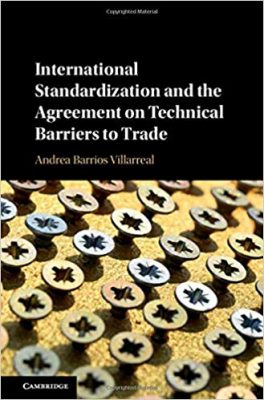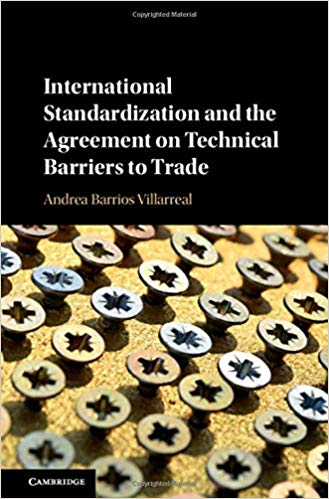 Author: Andrea Barrios Villareal
Author: Andrea Barrios Villareal
Publisher: Cambridge University Press – 312 pages
Book Review by: Sonu Chandiram
International standardization refers to streamlining of rules and regulations in international trade, for the purpose of clarifying trade expectations and trade outcomes. Standardized practices minimize misunderstanding, and thereby maximize understanding between and among nations in the buying, selling, and exchange of goods and services.
Standardization also serves to lower the barriers to trade between countries. “What you see is what you get,” is the expectation of honest traders and trading partners. These are some important points the author Andrea B. Villareal makes, about international standards and regulations, whether they are technical or not in nature, in her Introduction:
- They have existed since antiquity
- They are the invisible gears that shape the world we live in
- They shape not only the physical world we live in, but our social lives, even our very selves
- All the products that are traded and available at stores comply with regulatory standards
- They enhance food safety and product compatibility
- They provide consumers with important information
- They establish a common trade language
- They are instruments for governments to implement, economic, health, and social policies
- They foster economic growth of the country by increasing its growth domestic product
- They are used to minimize misinformation and maximize clarity
- They are used to diminish information asymmetry between producers and consumers, like providing nutritional values of processed foods on product labels
This book of over 300 pages has extensive as well as intensive coverage on the subject of standardization in international commerce – export and import – and it consists of numerous topics and subtopics organized around six chapters we name below to provide you the reader or student, an overview:
- The International Standardization System
- International Standards as Part of International Law
- Standards from an International Perspective
- International Standardization under the WTO
- Practical Application of the Concept of an International Standardizing Body
- Practical Application of the Concept of International Standard: Case Study
- General Conclusions
Each of the chapters above provides a section named Conclusion(s) so that you can browse what they are and then choose to read, or not read that particular chapter.
This book provides a four-page list of abbreviations and acronyms used in international trade, for those who are unfamiliar with some or many of those terms. It also includes five tables filled with data. For example, if you want to know what factors are looked upon in matters of conflict when decisions need to be made in resolving those matters, there is a table entitled The components of the principles in the Decision.
There is a lot of information out there on matters pertaining to international commerce, trading and negotiations, so this book provides a Bibliography of references used in this book that is 30 pages long, for your further study.
This is an excellent book on standardization in international trade that’s very useful and valuable.
Editor:
Andrea Barrios Villareal has a PhD in International Law from the Graduate Institute of International and Development Studies in Geneva. She has also worked on standardization issues for the Mexican government, international organizations and in the private sector, including roles as director for International Standardization at the Mexican National Standards Body and chair of the Codex Committee for Fresh Fruits and Vegetables.






